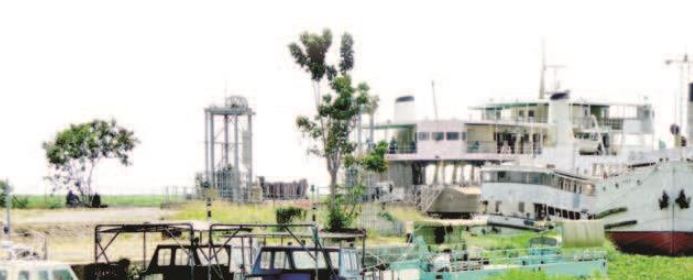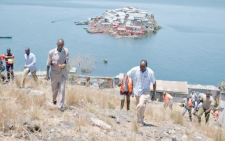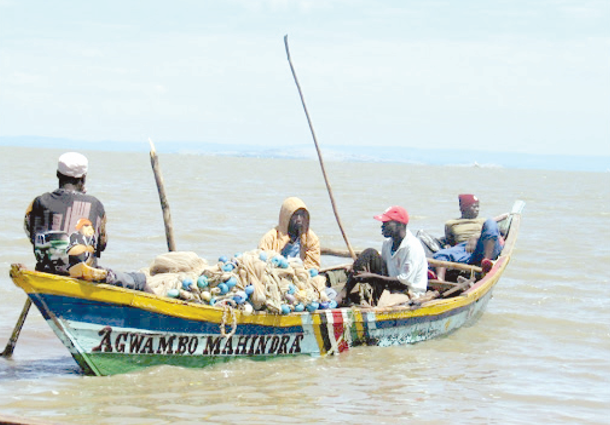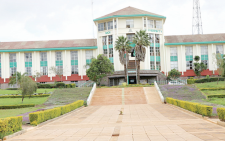Siltation spells doom for vital Lake Victoria

Lake Victoria, described as the heart of the African continent, the source of one of the mightiest river, the Nile, is on the brink of extinction, scientists have warned.
Though this mighty body of water is rich in fish life, with shimmering shoals of colourful cichlids and large Nile Perch, siltation and eutrophication [the enrichment of water by nutrient salts that causes structural changes to the ecosystem such as increased production of algae and aquatic plants) spells doom to this majestic natural resource.
Dr David Langat, a scientist with the Kenya Forestry Research Institute [Kefri], points out that at least three million tonnes of soil gets into the lake annually.
“The lake and its biodiversity is being decimated by pollution, siltation and invasive species. Through siltation over three million tonnes of soil is deposited in the lake annually,” he said.
Kefri’s disclosure affirms a recent report from the International Union for Conservation of Nature [IUCN] that 76 per cent of fresh waters pecies endemic to the lake basin are threatened with extinction.
The extinction risk of 651 species of freshwater decapods (crabs, crayfish and shrimps), fishes, molluscs, odonates [dragonflies and damselflies) and aquatic plants was assessed.
Thirty one per cent of these species are native to the Lake Victoria Basin, with Levels particularly high amongst the fishes [78 per cent) due to the large haplo chromine cichlid (a type of fish) community of the lake.
Further, eight percent of native species and 26 percent of endemic species are tagged as “possibly extinct”.
The 2018 IUCN report dubbed Freshwater Biodiversity in the Lake Victoria Basin Faces Extinction attributed the threat to pollution, biological resource use, agriculture and invasive species.
“The risk of extinction for freshwater biodiversity in the region is increasing,” says Catherine Sayer, IUCN Programme Officer and a co-author of the report. She said the basin is home to hundreds of species, which haven’t yet been described. This means the number of species at high risk of extinction may be even greater t han currently known.
Poor land use
Langat pointed that the rate of siltation might be higher if Lake Victoria neighbours Uganda and Tanzania were factored in.
He expressed concern that poor land use practices and deforestation on the upper WILL DARWAL Tcatchment areas of the Lake Victoria Basin ecosystem was the biggest cause of siltation.
Dr Langat, Kefri Rift Valley Eco-Research Programme Regional Director, pointed that the soil deposited is rich in nutrients hence increasing the late of eutrophication.
“Due to eutrophication, invasive species such as water hyacinth continues to ravage the lake hence affecting marine life and also transport,” he said.
He added that fish species, the mainstay of the lake region, has suffered irredeemably hence action is needed. He pointed that siltation has been gradual over the years from 1970’s where forests and vegetation were cleared to accommodate human settlement and for agricultural use.
Freshwater species are important sources of food, medicine and construction material for millions of people living in the basin and provide resources for communities who cannot access or afford market goods.
The African Lungfish, for example, is declining in the Lake Victoria Basin largely due to overfishing, poorfishing practices and environmental degradation as wetlands are converted to agricultural land.
Drive sustainable management
The lungfish is considered a delicacy for some local communities and is an important local medicinal product, used to boost the immune system and treat alcoholism. It is also traded in markets, making it important to the local economy.
“The Lake Victoria Basin is incredibly rich in unique species found nowhere else on earth, yet its biodiversity is being decimated,” Will Darwall, Head of IUCN’s Freshwater Biodiversity Unit and a co-author of the report said.
Darwall said the effects on communities that depend on the lake for their livelihoods could be disastrous.
“We hope th is report will drive more sustainable land and water management in the Lake Victoria Basin by informing policymakers and conservation programmes,” he added.
Lake Victoria is the world’s second largest freshwater lake by surface area. Its catchment area includes parts of Kenya, Tanzania, Uganda, Burundi and Rwanda and is known for its high levels of unique biodiversity.
The report revealed that the invasive species also present an important threat to native biodiversity in the basin, affecting 31 percent of a 11 species and 73 percent of threatened species. The purple flowered Water Hyacinth was accidentally introduced to Lake Victoria from South America in the 1980s, and at its peak covered close to 10 percent of the lake surface in dense floating mats.
The government has tried to eradicate the water hyacinth with no much success.















